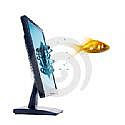 Just because they are cleaning supplies doesn't mean they aren't luxuries! Here's how to stretch your dollar by stretching your cleaning supplies - and replace some with very low cost alternatives.Instructions
Just because they are cleaning supplies doesn't mean they aren't luxuries! Here's how to stretch your dollar by stretching your cleaning supplies - and replace some with very low cost alternatives.Instructions
Step 1
Hand Soap for bathrooms and kitchens: buy hand soap in those dispensers with the soap dispensed in a foamy lather. Also purchase a large refill bottle of hand soap - which will save you money right off the bat. When the dispensers empty, fill them only 1/5-1/3 of the way with the refill soap - and fill the rest with water. Swish gently to mix, and pump a few times to get the foam flowing. Dispensing soap this way also saves water - you don't have it running while you make a lather!
Step 2
Buy cleaning concentrates. I bought both all-purpose cleaner and a germicide concentrates years ago from Shaklee, but janitorial supplies would have similar products. That's right, I said years. I mix just a 1/2 teaspoon with 16 ounces of water for basic cleaner, and use a little less concentrate for glass cleaner. The germicide is a cleaner, but is also anti-bacterial. Buy some good spray bottles and mix up your solutions - label clearly.
Step 3
Buy cloth diapers for cleaning cloths. They are lint free, and very inexpensive, and you'll save a lot on paper towels! Just toss in the laundry when you're done cleaning. I also use a diaper on one of those fancy mops - I tuck it around the mop head and spritz with a little cleaner or plain water to give the floor a quick wipe or dusting. No more reason to buy those boxes of mop cloth refills.
Step 4
A cup of white vinegar in a sink of hot water is great for mopping floors. Vinegar kills bacteria, mold and germs, is cheap and leaves no soap residue. I used to buy floor cleaners, and ended up with cloudy floors - the soap was not drying clear. Vinegar and water cuts grease and leaves my floors sparkling.
Step 5
Don't bother at all with fabric softener. I gave it up years ago when I noticed my towels were getting less absorbent. I find since most of our clothing is cotton, which doesn't usually get static, I don't miss it. Polyester fabrics might get static - but just spritz with a bit of water.
Step 6
Generic shampoo gets your hair as clean as the name brands. Really and truly they do. If you must have your name brand hair product, spend the money on the conditioner - some of which actually remains on your hair.
Step 7
Generic baby wipes in the car make for easy clean up of sticky hands, and I've also used them to wipe down my dusty dashboard. Check the unit price and buy the cheapest you can.
Step 8
Always keep a dish towel next to the kitchen sink, and hide the paper towels under the sink. We save a ton of paper towels this way - if they are on the counter, everyone uses them to dry their hands without thinking twice. Make them think twice!
Tips & Warnings
Make sure to label cleaning products clearly - and keep out of reach of pets and children
 Being multi-lingual is a huge asset these days because of cultural communication barriers. Here are some language-learning tips.
Being multi-lingual is a huge asset these days because of cultural communication barriers. Here are some language-learning tips.






















